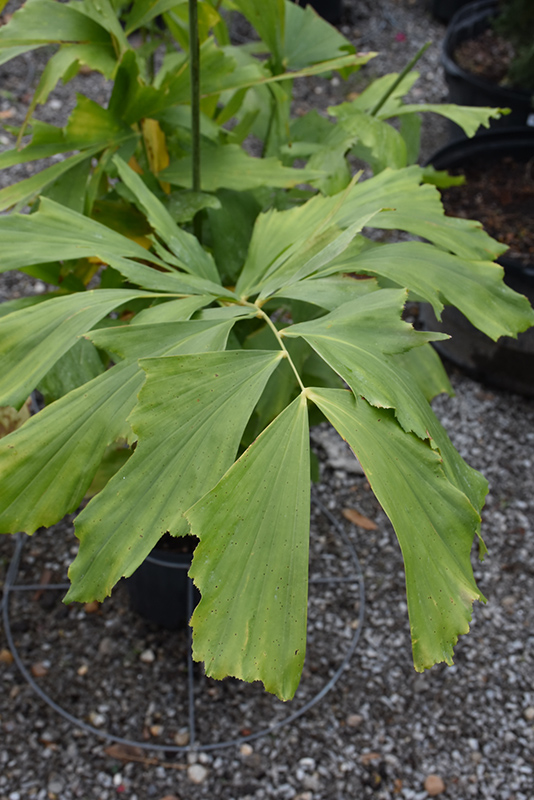>> Home
Height: 8 feet
Spread: 5 feet
Sunlight:
![]()
![]()
![]()
Description:
This palm typically forms multi-stemmed clusters of slender stems, topped with several large bi-pinnate leaves; light green leaflets are shaped like a fish's tail fin; an interesting potted plant for a bright indoor area
Features & Attributes
Fishtail Palm's attractive fan-shaped bipinnately compound leaves remain green in color throughout the year on a plant with the bulk of the canopy held atop a towering trunk or stem.
This is a multi-stemmed evergreen houseplant with a towering form with a high canopy of foliage concentrated at the top of the plant. Its relatively coarse texture stands it apart from other indoor plants with finer foliage. This plant should not require much pruning, except when necessary to keep it looking its best.
Planting & Growing
When grown indoors, Fishtail Palm can be expected to grow to be about 8 feet tall at maturity, with a spread of 5 feet. It grows at a slow rate, and under ideal conditions can be expected to live for approximately 40 years. This houseplant performs well in both bright or indirect sunlight and strong artificial light, and can therefore be situated in almost any well-lit room or location. It does best in average to evenly moist soil, but will not tolerate standing water. The surface of the soil shouldn't be allowed to dry out completely, and so you should expect to water this plant once and possibly even twice each week. Be aware that your particular watering schedule may vary depending on its location in the room, the pot size, plant size and other conditions; if in doubt, ask one of our experts in the store for advice. It is particular about its soil conditions, with a strong preference for rich, acidic soil. Contact the store for specific recommendations on pre-mixed potting soil for this plant. Be warned that parts of this plant are known to be toxic to humans and animals, so special care should be exercised if growing it around children and pets.
There are many factors that will affect the ultimate height, spread and overall performance of a plant when grown indoors; among them, the size of the pot it's growing in, the amount of light it receives, watering frequency, the pruning regimen and repotting schedule. Use the information described here as a guideline only; individual performance can and will vary. Please contact the store to speak with one of our experts if you are interested in further details concerning recommendations on pot size, watering, pruning, repotting, etc.
-- THIS IS A HOUSEPLANT AND IS NOT MEANT TO SURVIVE THE WINTER OUTDOORS IN OUR CLIMATE --
